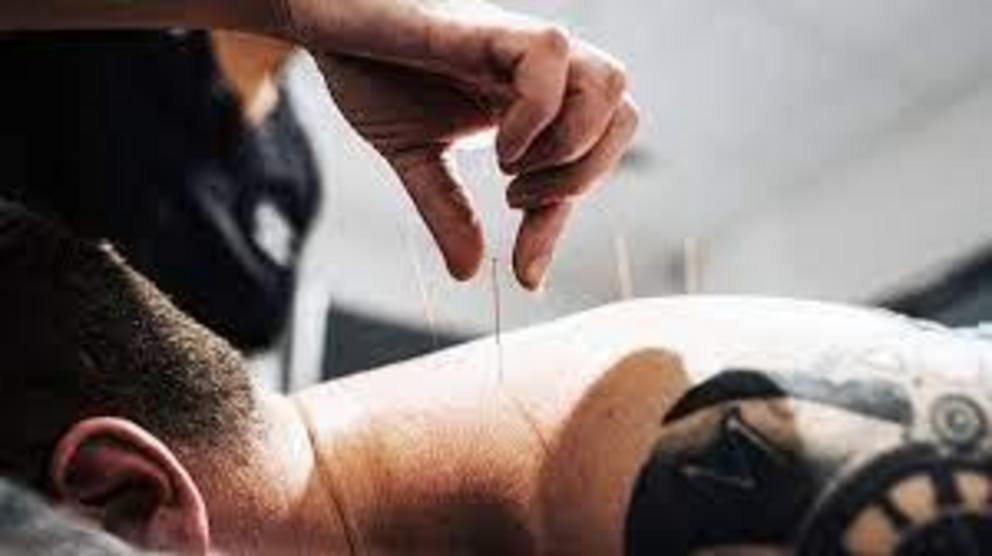How does acupuncture work?
Medically reviewed by Kerry Boyle D.Ac., M.S., L.Ac., Dipl. Ac., CYT
Acupuncture involves inserting very thin needles into the body at different locations and depths. It aims to balance the life forces known as Qi that are responsible for different health issues.
Acupuncture can help relieve pain and treat a range of other complaints. However, the exact way in which it works remains unclearTrusted Source. Some people believe it works by balancing vital energy, while others believe it has a neurological effect.
In this article, we detail what acupuncture is, how it may work, and what the practice’s benefits and risks are.
What is acupuncture?
Acupuncture involves inserting needles into the body to stimulate sensory nerves in the skin and muscles. This may help treatTrusted Source chronic pain and other physical conditions.
Acupuncture has roots in traditional Chinese medicine (TCM) and is now a common complementary treatmentTrusted Source worldwide.
How does it work?
TCM explains that health is the result of a harmonious balance of the complementary extremes of yin and yang of the life force known as Qi, pronounced “chi.” Advocates believe that illness is the consequence of an imbalance of these forces.
According to TCM, Qi flows through meridians, or pathways, in the human body. These meridians and energy flows are accessible through 361 acupuncture points in the body. Inserting needles into these points with appropriate combinations will bring the energy flow back into balance.
A 2017 review suggests that many acupuncture points are at sites where stimulation can affect the activity of multiple sensory neurons. These sites are also known as receptive fields.
The physical stimulation of needle insertion at these sites may affect pain processing in the central nervous system and muscles and increase blood flow to certain parts of the body.
A 2018 meta-analysisTrusted Source of acupuncture’s effect on chronic pain found that the practice can provide pain relief benefits distinguishable from placebo. However, the exact mechanism by which acupuncture works is not clear.
Risks
All therapies come with both risks and benefits. A person should always seek medical advice before undertaking any therapy.
Possible risks of acupuncture are the following:
- Bleeding, bruising, and soreness may occur at the insertion sites.
- Unsterilized needles may lead to infection.
- In rare cases, a needle may break and damage an internal organ.
The Food and Drug Administration (FDA) regulates acupuncture needles as medical devices. Their manufacture and labeling need to meet certain standards. The needles must be sterile, nontoxic, and labeled “for one use only” by a licensed practitioner.
As with any complementary therapy, it is advisable to use acupuncture alongside conventional treatments in cases of chronic or severe conditions.
Benefits
Acupuncture is a common complementary therapy that can help people manage many different conditions.
Benefits of acupuncture include the following:
- People can effectively combine acupuncture with other treatments.
- Effective acupuncture can help manage chronic painTrusted Source, migraine, and headaches.
- Acupuncture carries a low risk of side effects.
- It is a flexible form of treatment that can target numerous health concerns at once.
The National Center for Complementary and Integrative Health (NCCIH)Trusted Source advises people not to use acupuncture as a replacement for conventional medical help.
Uses
The NCCIH states that acupuncture can effectively assistTrusted Source in the treatment of:
Other studiesTrusted Source suggest that acupuncture can also assist in the treatment of:
- migraineTrusted Source
- peripheral neuropathyTrusted Source
- nausea
- rheumatoid arthritis
- fatigue
- tendinopathy
What to expect
An acupuncturist will examine a person and assess their condition, insert one or more thin, sterile needles, and offer advice.
Individuals will typically sit or lie down during the procedure. The acupuncturist should use single-use, disposable, sterile needles. People may feel a very brief stinging or tingling sensation upon needle insertion.
They may then experience a dull ache at the base of the needle.
Typically, the needles will stay in place for 20–60 minutes, although this will vary depending on the procedure.
In some practices, the acupuncturist will sometimesTrusted Source heat needles after insertion.
The number of treatments a person will need depends on their individual case. Someone with a chronic condition may need one or two treatments per week over several months. An acute health issue typically improves after 8–12 sessions.
Things to consider
Acupuncture is a complementary therapy and should not take the place of doctor-recommended treatments.
Before undergoing acupuncture to treat chronic pain or other conditions, a person should seek advice from a primary care physician. In some U.S. states, acupuncturists themselves can be primary care physicians.
Summary
Acupuncture is a traditional complementary therapy that has a historic origin in China. It involves inserting small needles to stimulate specific parts of the body and its neural network.
Studies show that acupuncture can help manage chronic pain, OA, headaches, and migraine.
Acupuncture carries little risk of side effects, and practitioners must carry a license to perform acupuncture procedures.
Last medically reviewed on April 4, 2022

